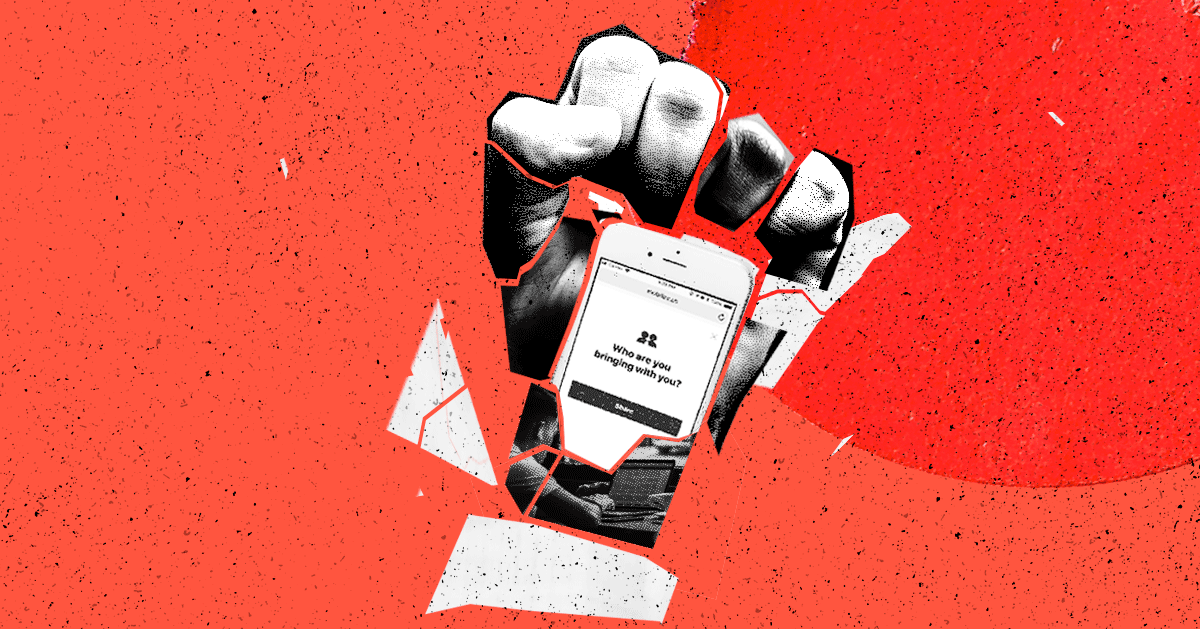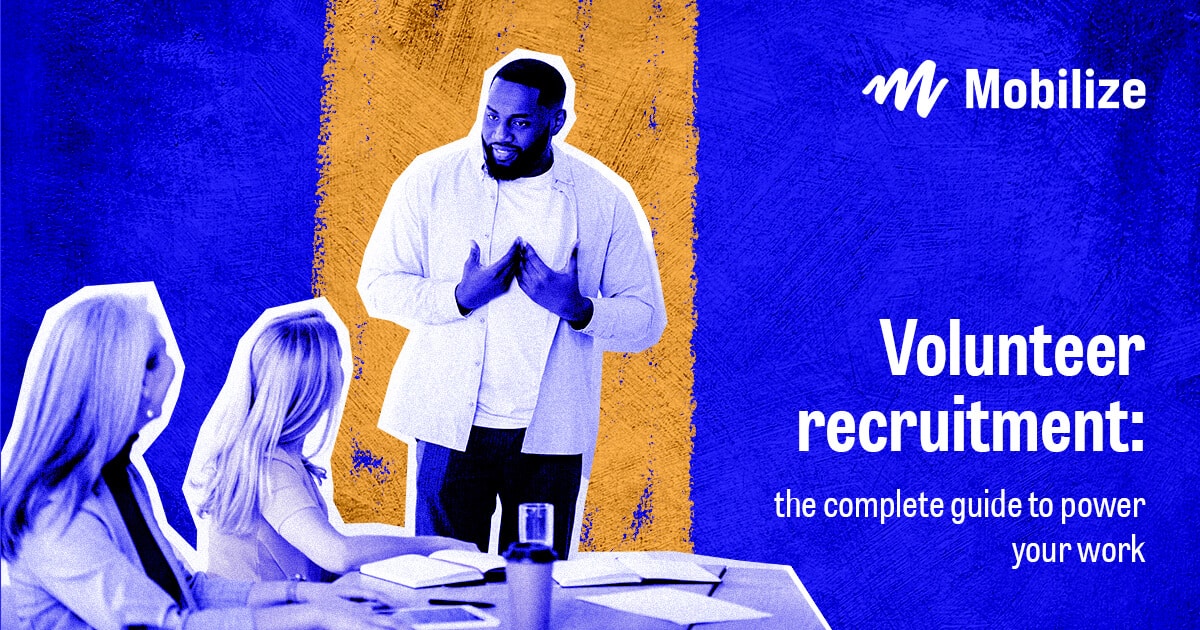

Best Practices
Best Practices
Virtual labor organizing is a critical part of running effective campaigns today. Learn more about the top strategies for virtual success.

With stay-at-home orders in place, labor organizing has moved online. This has led unions to look into creative solutions and virtual events to provide members with necessary information and move them to take action.
While the task of reconstructing your movement’s events from the ground up may be daunting, we have compiled a list of our favorite virtual actions and events that labor unions can use to inspire their own ways to keep members engaged. Virtual organizing does not need to limit your grassroots organizing work—it even has many advantages compared to physical events!
Virtual organizing, or managing and engaging volunteers remotely on behalf of an organization, has rapidly risen in popularity due to COVID-19. Prior to mid-March 2020, about 25% of events on Mobilize were virtual. That rapidly scaled to nearly 100% after stay-at-home orders were imposed. We’re also seeing that supporters are just as motivated as they have ever been—weekly volunteer signup volume in the last several months has been higher than any week in 2019.
Virtual organizing has many advantages. It is accessible to anyone, eliminating the need for a physical location. Complicated logistics such as event space and transportation are replaced by simpler ones, like video conference schedules and virtual volunteer outreach. For many events, all you need to provide is an event page with a link to the call, and volunteers can be recruited through social media, email, or other online platforms.
With today’s technology, there are infinite ways to channel supporter energy virtually. Many organizations, campaigns, and unions have quickly pivoted their mobilization strategies to include virtual events in order to maintain momentum and engage with supporters. Specifically in the labor movement, unions moved quickly to facilitate online actions to address the issues caused by the current global pandemic. They continue to find new, creative ways to display solidarity and unity in the time of social distancing.
COVID-19 has brought two of the issues that workers care about—job security and safety—into the forefront. This pandemic has led to widespread lay-offs, especially in the hospitality, manufacturing, and construction sectors.
This pandemic has also pushed workers from all different geographical areas and jobs to demand better working conditions and benefits, including personal protective equipment (PPE), safety procedures, and hazard pay. In some cases, we’ve seen some workers even face suspensions for demanding PPE, such as the nurses in California who were suspended after demanding N95 masks.
To harness this energy and worker resistance, labor unions continue to lead the way in advocating for the health and safety of all frontline workers and our communities so we can pull through this pandemic together.
Even though unions are at the forefront at this moment, stay-at-home orders have limited workers’ ability to come together and communicate with each other to successfully achieve their goals. Working from home presents challenges, mainly the inability to speak in person. This leaves union organizers dependent on messaging software, like peer-to-peer texting and phone banking, to try and reach workers and members to move them to take action. While protests and walkouts aren’t being organized as usual, unions still need to educate their members and organize effective campaigns.
Virtual organizing plays a pivotal role in union strategy in 2021. These techniques can be used by existing labor unions to reach current members to take action in new ways. Unions can use technology to host forums, phone banks, or town halls. Workers everywhere can join together in a video conference without concerns about event accessibility.
When moved online, organizing expands beyond state borders or physical location, and meetings can be protected using video call privacy settings. Rallies and petitions can also be done from the comfort of one’s home.
Despite the logistical complications of working from home and the inability to convene at workplaces, 2021 has the potential to change dynamics in the workplace and substantially shift some organizing tactics. As Daniel Graff, a labor historian at Notre Dame University, points out, “People’s fears of sickness and death are finally stronger than people’s fears of their employer.”
Workers are recognizing the importance of their unions, and they are looking for a way to vocalize their demands and demonstrate that they remain a force to be reckoned with. If organizers devise a plan for tapping into and rallying workers’ passion, they can make an impact on the workplace that will extend far beyond COVID-19. With the virtual tools available today, this mobilization is more than possible.
Organizations are hosting on-boarding or volunteer trainings online. These trainings can be held in real-time or they can be pre-recorded and sent out. Training volunteers and staff is a great way for people to refresh their knowledge, learn new organizing or technical skills, or simply gain a deeper understanding of the issue or program. Supporters leave these calls feeling more knowledgeable about the campaign and better able to advocate for shared ideas. Building up confidence is the key to keep volunteers coming back!
The National Education Association (NEA) hosts webinar trainings to teach members how to become more effective messengers and influencers in their communities. For example, they have trainings about telling personal stories, asking others to get involved, text banking, and more. Skill trainings like these make volunteers more confident and therefore, more likely to volunteer! These Zoom trainings enable supporters to make the greatest impact in their work, allowing unions to recruit and communicate more effectively.
These types of events are fairly easy to host virtually. For most organizations, volunteers only need a laptop or phone to access phone bank or text bank events. Organizers can use Mobilize to schedule shifts for volunteers and send out necessary information to registered attendees. This information may include program log-in instructions, call scripts, or a Q&A forum. These phone banks can be used for many different goals including encouraging supporters to attend town halls, join webinars, or call legislators to pass PPE legislation.
The Service Employees International Union 49 (SEIU-49) hosted a phone bank to reach members and encourage them to vote for candidates who support unemployment and expanded sick leave. Phone banks are a great opportunity to stay in touch with members and keep them informed.
Some organizations host their text banks or phone banks consistently, which can make it easier for supporters to volunteer more frequently. Organizers may be worried about keeping volunteer performance accountable virtually. If an organization would prefer to screen these calls, they can require background checks or record the calls.
Town halls can be hosted across many different platforms such as Zoom, Instagram Live, Facebook Live, or Twitter. By virtually hosting town halls, attendees can access the event from anywhere in the world. It also makes it easier to record a town hall to post later, so those who could not attend can rewatch the event.
Organizers can use Mobilize to schedule these events, engage volunteers, and distribute event information. For many town halls, organizations provide a form for supporters to submit questions in advance. This helps ensure that the event will be relevant for its attendees. Also, an easy way to keep town halls engaging and educational is to feature key speakers.
For example, the National Education Association hosted a tele-town hall featuring Sen. Kamala Harris, Rep. Jahana Hayes, NEA President Lily Ekelsen García, and Bradley Whitford. Here, they discussed the work Congress needs to do to support educators during the coronavirus. By hosting this online, NEA was able to gather speakers from across the country, easily filter questions for guests, and host more than 12,000 attendees.
Petition signatures can be moved online. There are many benefits to virtual petition. Namely, links can be easily shared and signed. Petitions should be accompanied by supplemental information to inform and encourage potential signers. These petitions can be easily spread to supporters across social media, emails, or peer-to-peer recruitment.
Some groups even schedule events designed to gather signatures. For example, Eddie Mauro’s Senate campaign gathered petition signatures by putting the link to sign in the event description. They also embedded a “Sign the Petition” button in their email that linked recipients to the petition. Making the link as accessible as possible was a key factor in the success of the signature gathering. In some ways, having virtually-signed petitions can lead to greater success because links are easy to sign and share.
Organizers host rallies and strikes virtually to make sure their supporters are heard. Planning ahead can provide rallies with structure, even when they are online. An effective method for recruiting supporters is to feature top-profile guest speakers, if possible.
Organizations have also displayed solidarity by gathering individual photos of supporters protesting to create a collage and rallying supporters on different platforms such as Zoom (or even Animal Crossing!).
It is also important to provide attendees with a direct and attainable call-to-action. Whether that is writing letters to senators, signing up for phone banks, or registering voters, users should walk away with a clear understanding of what to do next.
For example, the Working Families Party hosted a digital rally via Zoom. Stacey Abrams was featured as a key speaker to discuss the protection of democratic rights. Attendees all wore green to display solidarity and, at the event, learned how to push their legislators to support COVID-19 relief legislation.
Organizers do not have to take on the burden of volunteer recruitment alone. Oftentimes, supporters are the most effective recruiters. After signing up for an event on Mobilize, volunteers are prompted to bring friends. Mobilize makes it as easy as possible for volunteers to reach out and encourage others to join.
On Mobilize in April 2021, 14% of all volunteer shifts came from these bring-a-friend nudges. 10% of volunteers who signed up successfully brought another volunteer.
One of the largest struggles organizers face is volunteer follow-through. Especially with larger events, keeping track of volunteer attendance is often manual and time-consuming. With Mobilize, volunteers who sign up will automatically be sent a confirmation email. These communications can be used to give private video conferencing information (e.g. Zoom call passwords).
Registrants will also be reminded via email and text a day ahead of the action, as well as the day of. Supporter information as well as attendance records are also easily accessible to inform digital strategy and make future action more effective.
Automated emails can also be used to follow-up with supporters after the event. 32% of attendees respond with in-depth qualitative feedback.

Best Practices

Best Practices

Best Practices